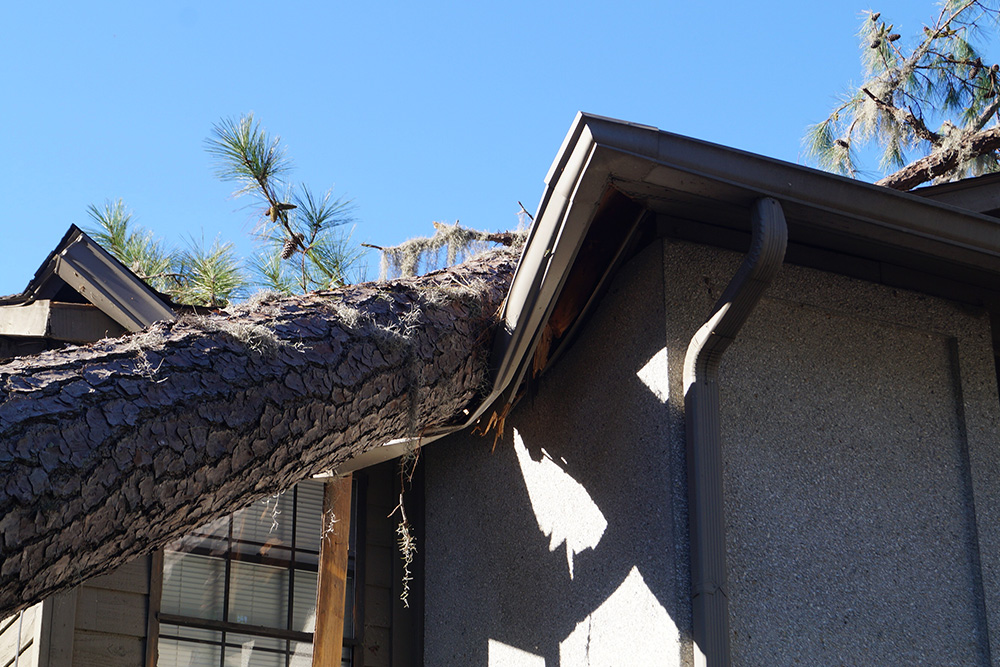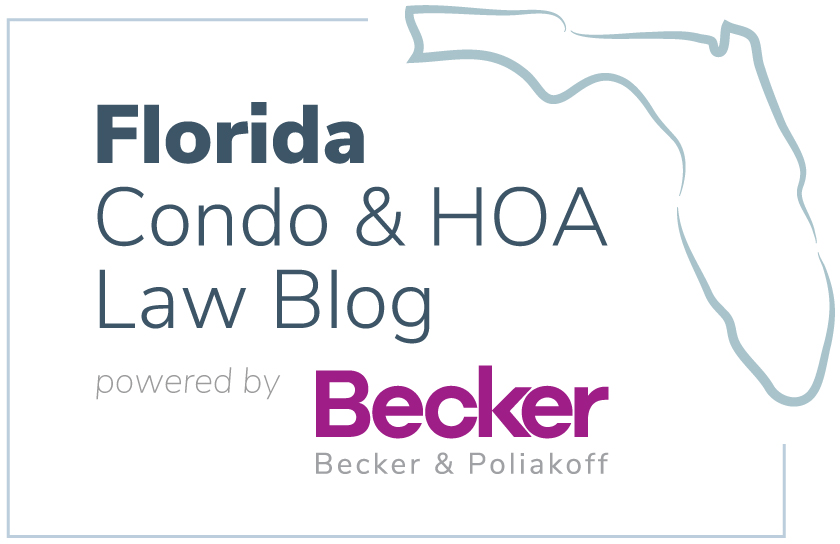
Almost three years have passed since Hurricane Irma and almost two years since Hurricane Michael. If your community has received insurance money and rebuilt, or if your community has only suffered minor damages, both hurricanes may seem a lifetime ago. Unfortunately, many communities are still suffering through unpaid claims and, in many cases, unknown damages.
It is hard to believe that there may be unknown damages years after a hurricane, but it happens frequently. Board members and managers conduct observations from the ground and are often unable to see visible damages to roofs, glass, sliding glass doors, or other components of buildings. In turn, they believe there are little to no damages throughout the community. These damages are often indiscernible to the lay person. However, these conditions can be identified upon close inspection by construction or engineering professionals. It is critical to have your property inspected by a professional given the impending deadline contained in most property insurance policies, which requires an insurance claim to be made within three years of the hurricane. This is a hard cut off in most property insurance policies. If you believe there may be resulting hurricane damage to your community, then you need to act quickly with regard to any Hurricane Irma damage.
Providing Notice of the Claim
Providing notice of the claim is the critical first step. Your policy will contain language such as “timely notice after the casualty,” “reasonable notice after the casualty,” or “within ‘X’ days of the casualty.” In addition, most policies contain an absolute bar to recovery if the claim is not made with the carrier within three years of the hurricane or damage causing event. It is best to obtain a report form an engineer, contractor, or other construction professional outlining the hurricane damages to your property. However, in many cases, the damages are not discovered until the buildings are inspected in response to leaky roofs or windows, at which point an investigator comes back and verbally notes the hurricane damage. At this stage, you should make the claim if you believe you have suffered hurricane damage, even with less than perfect information.
Given the impending cutoff for claims, it is safest to make the claim now even based on the verbal information provided by the inspector. Furthermore, simply informing your insurance agent of the damages is insufficient as notice must be provided to the insurance carrier under the terms of the policy.
After receiving notice of the claim, the insurer may do several things. Hopefully the insurer steps in, investigates the claim, and pays the claim. The insurer may wish to investigate the loss by conducting site inspections, requesting documents, taking examinations under oath, and asking for a sworn statement in proof of loss. The policy requires cooperation in the investigation of the claim.
Carrier Investigation
The investigation by the carrier can take many forms. Upon making a claim, the first thing to expect from the carrier is that they will want to have their adjusters and experts come out on-site and inspect the property. This will probably be done very soon after notice is provided. The carrier representatives will want access to the entire property and possibly within units. If so, access will need to be coordinated and provided with the cooperation of the unit owners.
Additionally, the carrier will likely request documents to include repair records, maintenance records, meeting minutes, financial statements, and a variety of other documents. The insurance company’s reason for wanting these documents is to establish what damages existed prior to the claim, if any, as well as to evaluate potential coverage issues.
The association is required to provide any documents that are responsive to the request. Each request should be reviewed and compared to association records to determine what exists and then produce them. This can be a very time-consuming process as you may be dealing with voluminous information. It is not unusual to produce thousands of pages of documents. You may believe this is a waste of time and that the insurance company can evaluate the claim without those documents, but remember that the policy allows the insurer to request the documents and requires the association to cooperate.
After receiving the documents, the insurer may ask for examinations under oath of the insured. An examination under oath is essentially a deposition. The witness is placed under oath, and the attorney for the insurance company asks a series of questions to which the witness is required to answer, all of which is transcribed by a court reporter. It can be an intimidating process. If your association is represented by counsel, then counsel should be present as well.
The witnesses may include members of the board of directors and possibly consultants that the association has retained. Generally, the examination under oath is only required of the insured. However, where the insured does not know the technical details of the damages or repairs, the association’s consultants may be required to take part in an examination under oath. In some cases, the insurer may ask to take the examinations of several board members, the manager, or consultants in order to evaluate the claim. The number and type of examinations required under the policy is a fact specific determination.
Finally, the carrier is likely to request a sworn statement in proof of loss. The sworn statement in proof of loss is a significant trigger under most policies. The policy will contain language stating that a coverage determination will be made within a set number of days after the proof of loss is submitted. The proof of loss is the document which sets out what the value of the claim. It is a very important document, and one that you should take very seriously. Although this document may be prepared by a lawyer or a public adjuster, the association is the signatory. Once signed and submitted, the proof of loss represents what the insured is representing, under oath, as the amount owed to the association. Although the proof of loss can be supplemented, accuracy is very important.
Conclusion
We would all love for the insurance companies to simply write a check when presented with a claim. However, the reality is that in sizeable claims the insurance company will use the policy to evaluate claims. The best advice in making a claim is to be prepared, be accurate, and assemble a team of professionals who understand such claims. Remember, an insurance policy is a contract between you and the insurer, nothing more. Although this particular contract may be lengthy and hard to understand, courts treat this contract as they would any other contract. In conclusion, remember that it is necessary to make your claim before the three-year cutoff to preserve your rights, and for Hurricane Irma claims that deadline is rapidly approaching.






Recent Comments